Hello everybody and welcome to another Retrospective. You may have seen our previous Retrospectives on Clive Barker's Undying by Noxious and Golden Sun: The Lost Age by Sule. This really is just a series where we take some old video games that we think would be fun to talk about and we… talk about them. My first Retrospective was on the first Sonic the Hedgehog game on the Sega Genesis, and it only seems natural that I also talk about its sequel that was released one year later, Sonic the Hedgehog 2.
Given the success of the original game, it was only inevitable that a sequel would be designed (just like how it was only inevitable that I would end up covering it in this series after the first game). The first Sonic game ended up being a winning formula, but Sonic Team knew that there was still some work that could be done. Sega had established itself as a viable rival to Nintendo. With an improved sequel, they could surely get the ball rolling, and that's exactly where Sonic 2 steps in.
While the first game was by no means bad, it has retrospectively been viewed as one of the weaker classic entries for the little blue guy. This is quite typical of many first installments in any particular franchise and it makes sense why this happens. For those of you who feel Sonic 1 to be a bit empty feeling, then Sonic 2 may very well be the game for you. Not only has its design improved upon Sonic 1, but Sonic 2 is one of the most influential games to future titles in the series. Many parts of Sonic 2 in fact end up carrying over to the series in the present day.
Gameplay
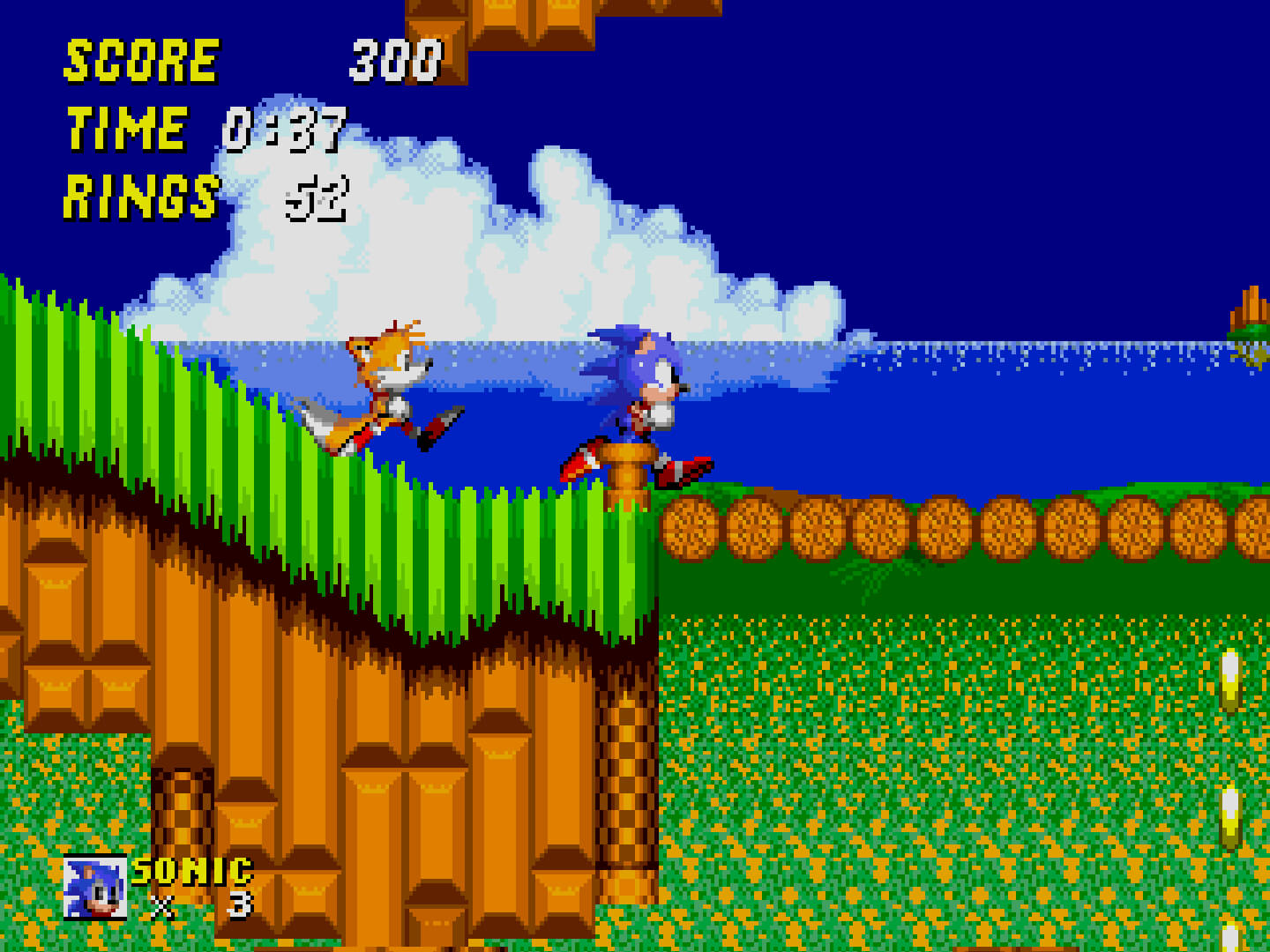
Sonic's back in the saddle, and he's made a new friend along the way.
Sonic's gameplay is pretty much exactly the same as in Sonic 1. He can run, he can jump, he can roll, he collects rings, he beats Robotnik, he moves on. If the mentality of not fixing what isn't broken were to apply to anything, it's platformer design. If you've played Sonic 1 (or any Sonic platformer for that matter), then you know how to play Sonic 2.
The HUD for the game is pretty much modeled after Sonic 1, although the text for the information at the top-left has been italicized and the top half is moved one pixel to the right. It's very weird and I'm not exactly sure what the idea behind this design choice was, but it's not like it makes the HUD hard to read or anything. It's not that obvious at first, but Sonic's shade of blue is also a bit deeper in this game compared to Sonic 1.
Along the way joins his new buddy, Miles Prower, although he's pretty much always referred to by his nickname, "Tails". By hooking up a second controller, you can actually have the second player play as Tails through either a competitive race mode or cooperatively through the main story. He cannot fly while being controlled by a player, but he will do it while the AI is taking the reins.
You've got 11 colorful new zones to traverse through in this game (or 12 if you're playing the 2013 port). Zones in this game only have 2 Acts instead of 3 (except for Sky Chase, Wing Fortress, and Death Egg which only have 1, and Metropolis which has 3).
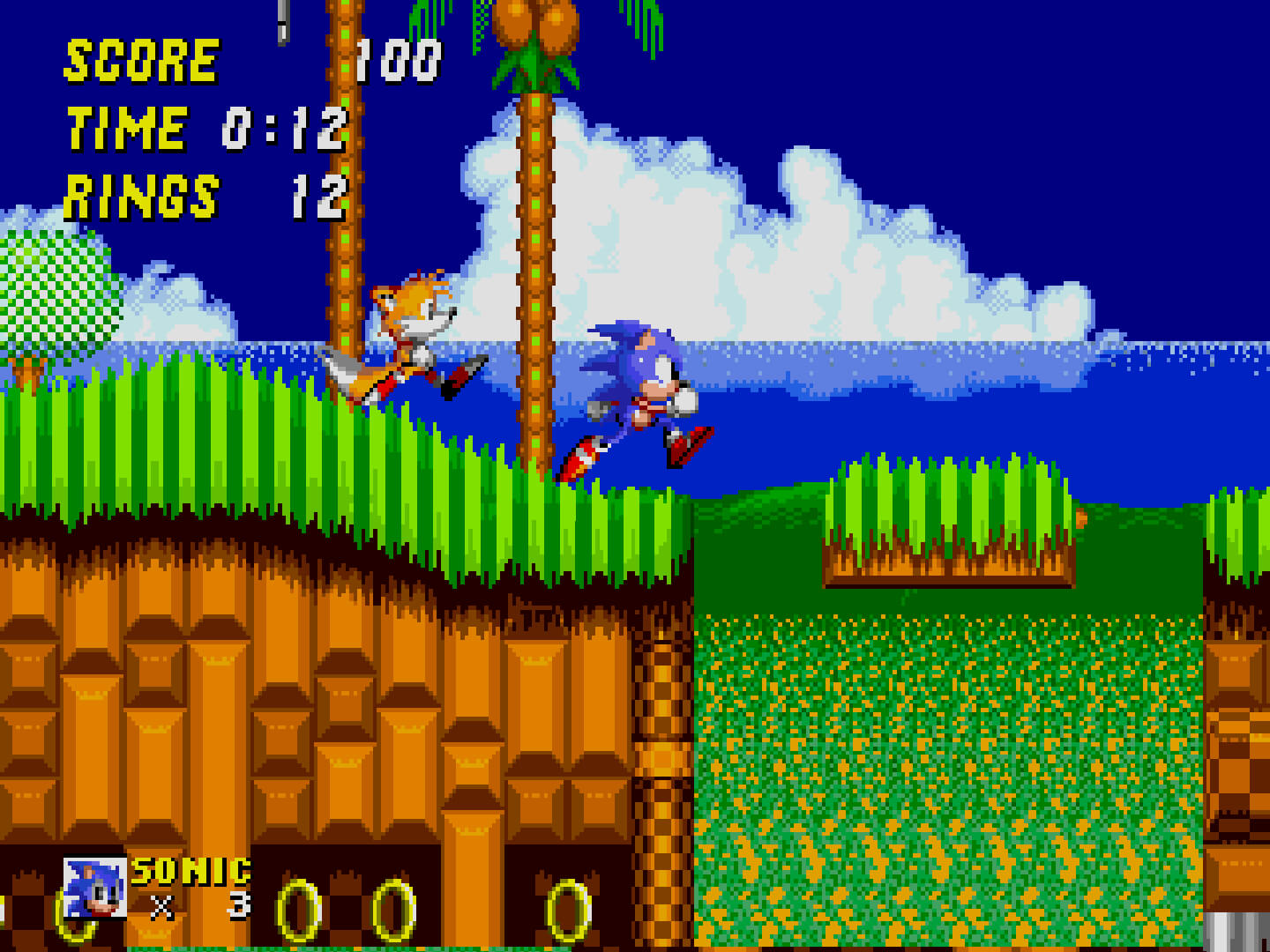
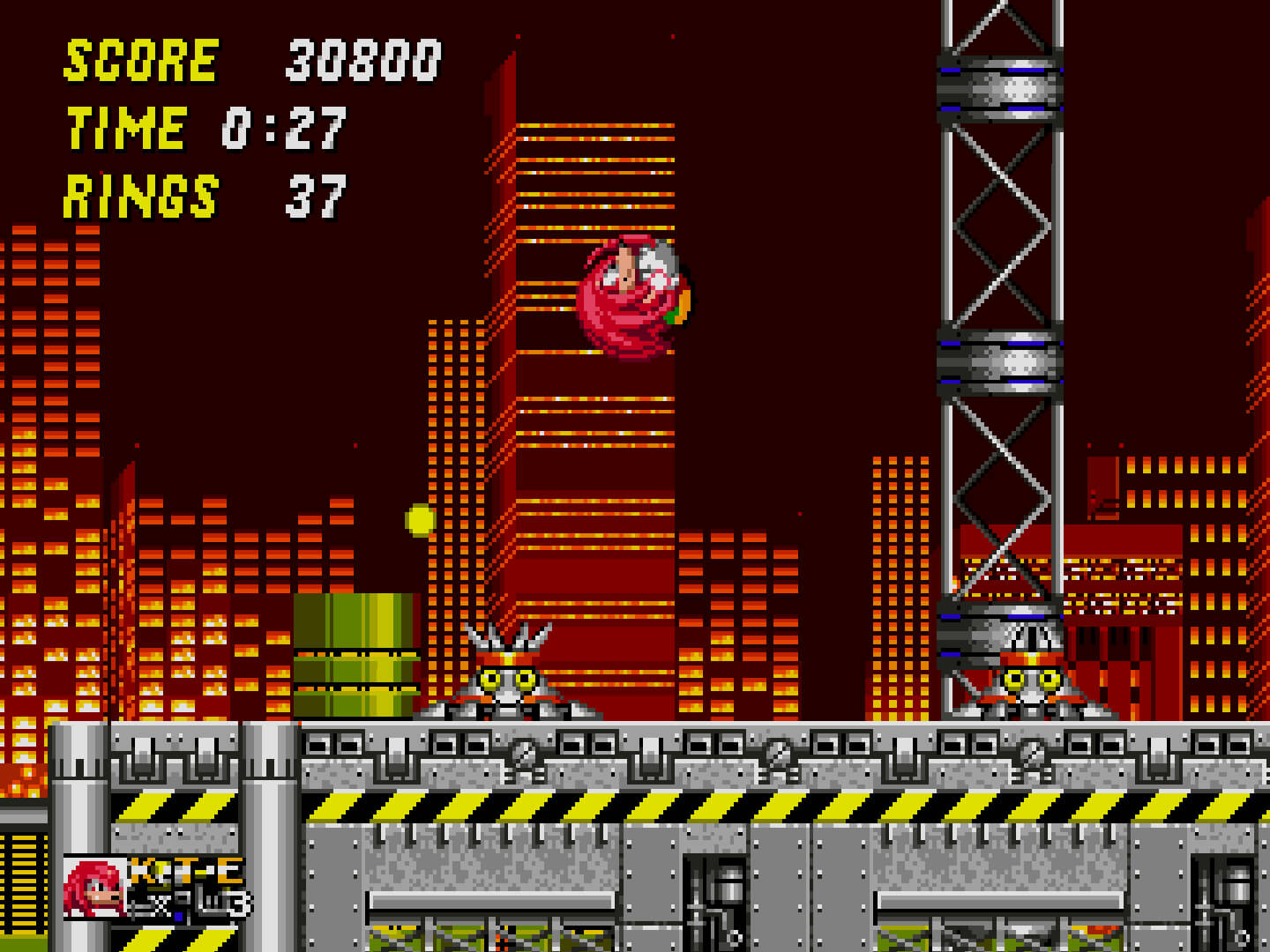
Left = Emerald Hill Zone
Right = Chemical Plant Zone
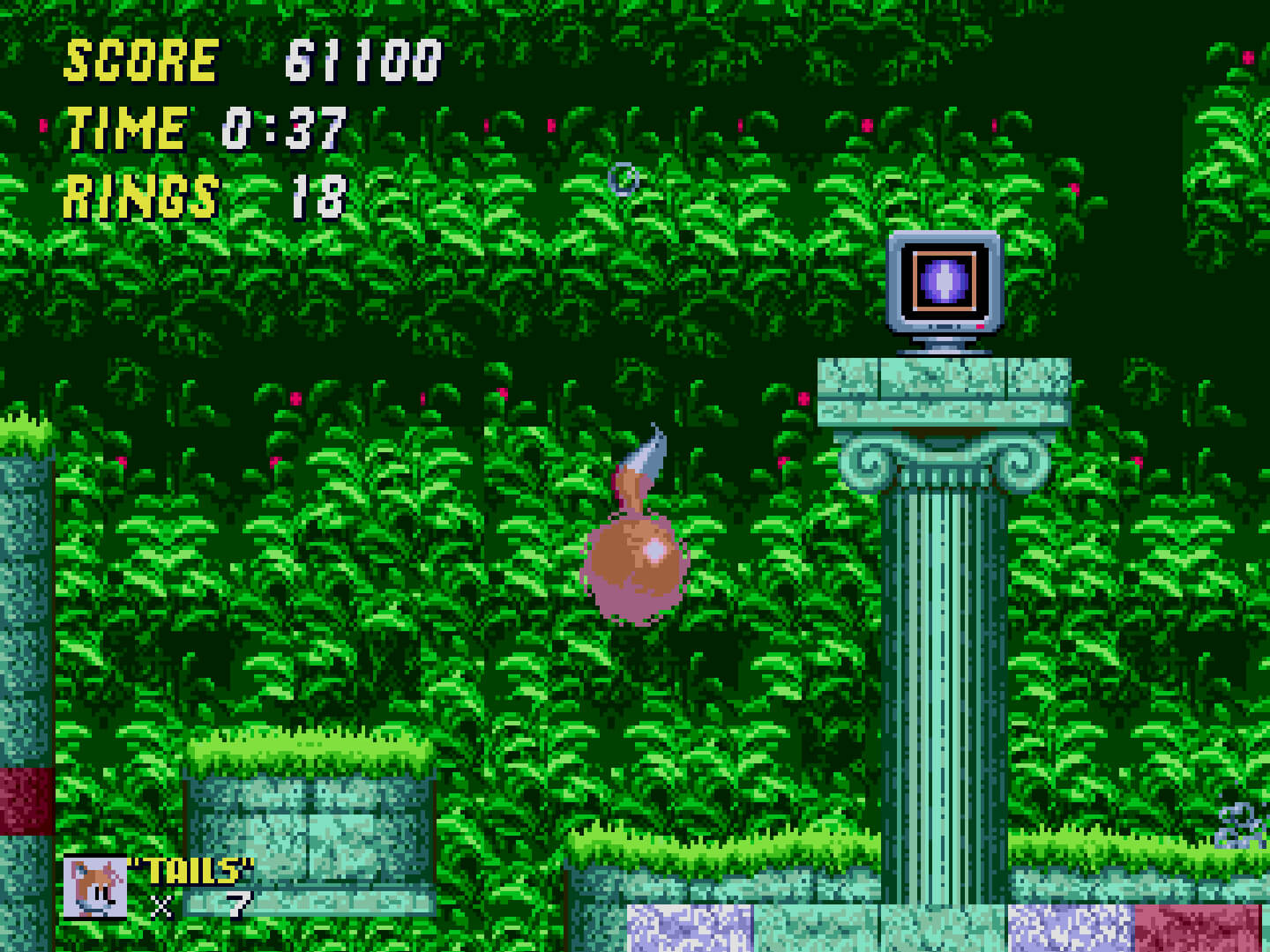
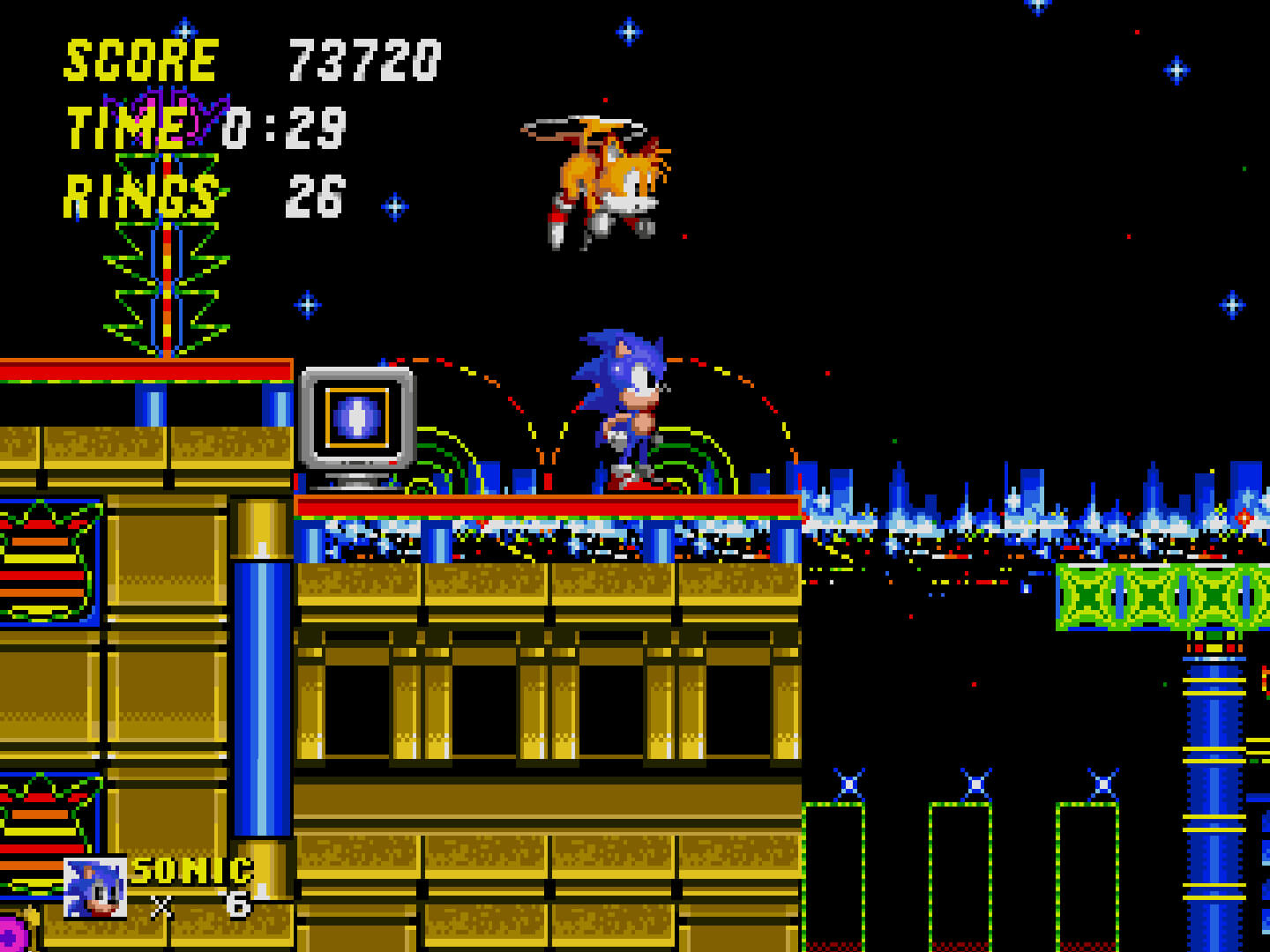
Left = Aquatic Ruin Zone
Right = Casino Night Zone
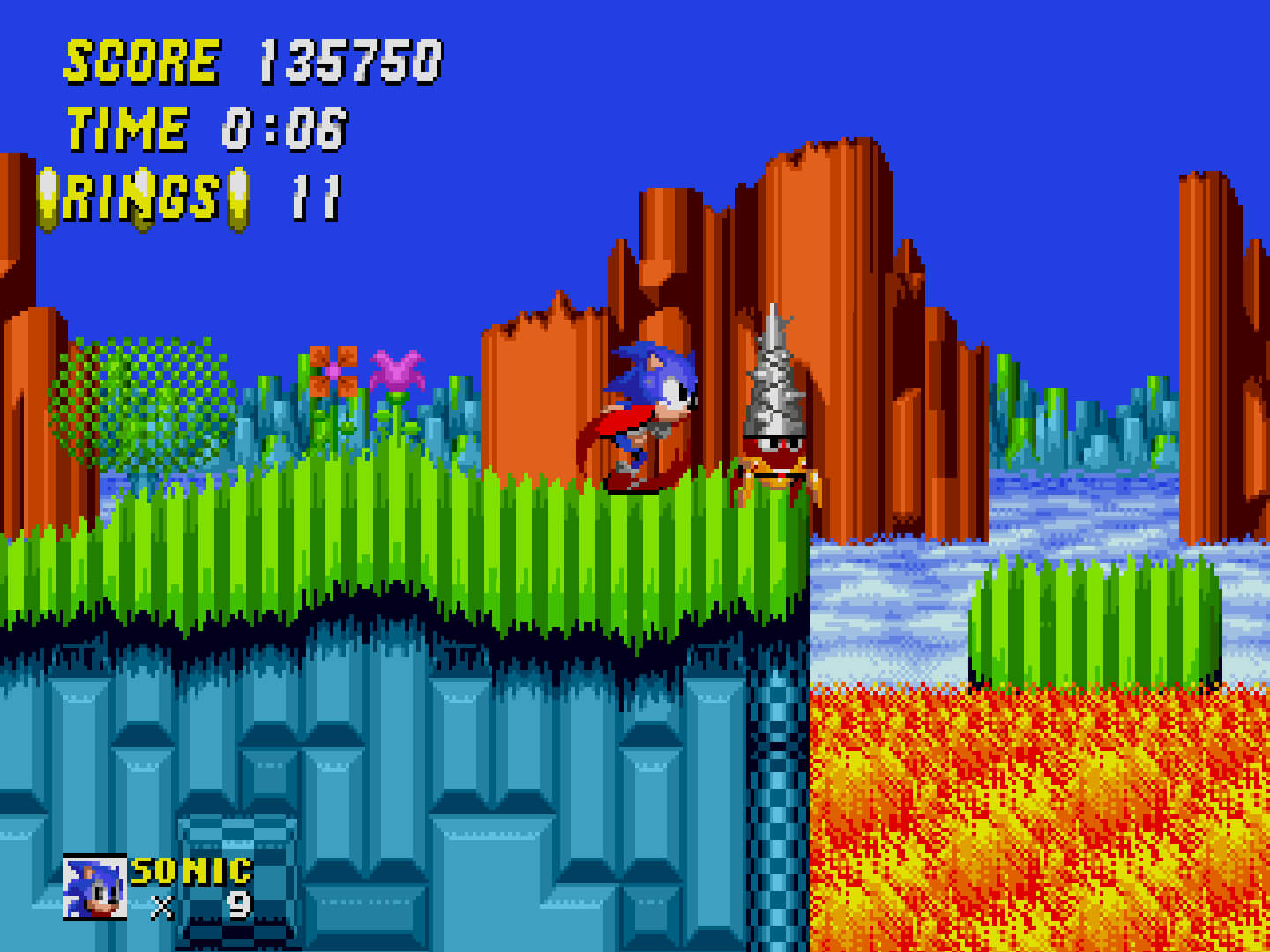
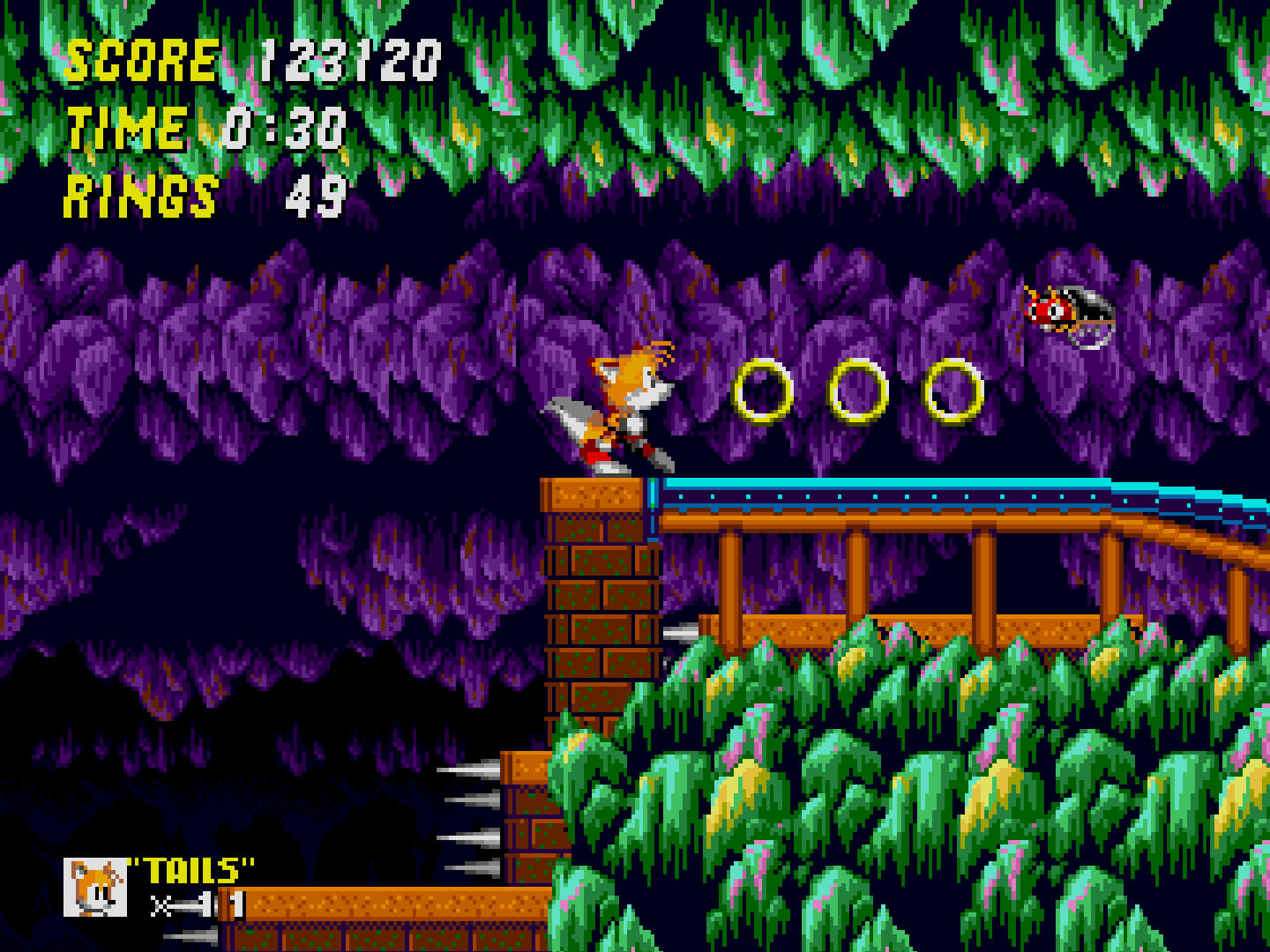
Left = Hill Top Zone
Right = Mystic Cave Zone
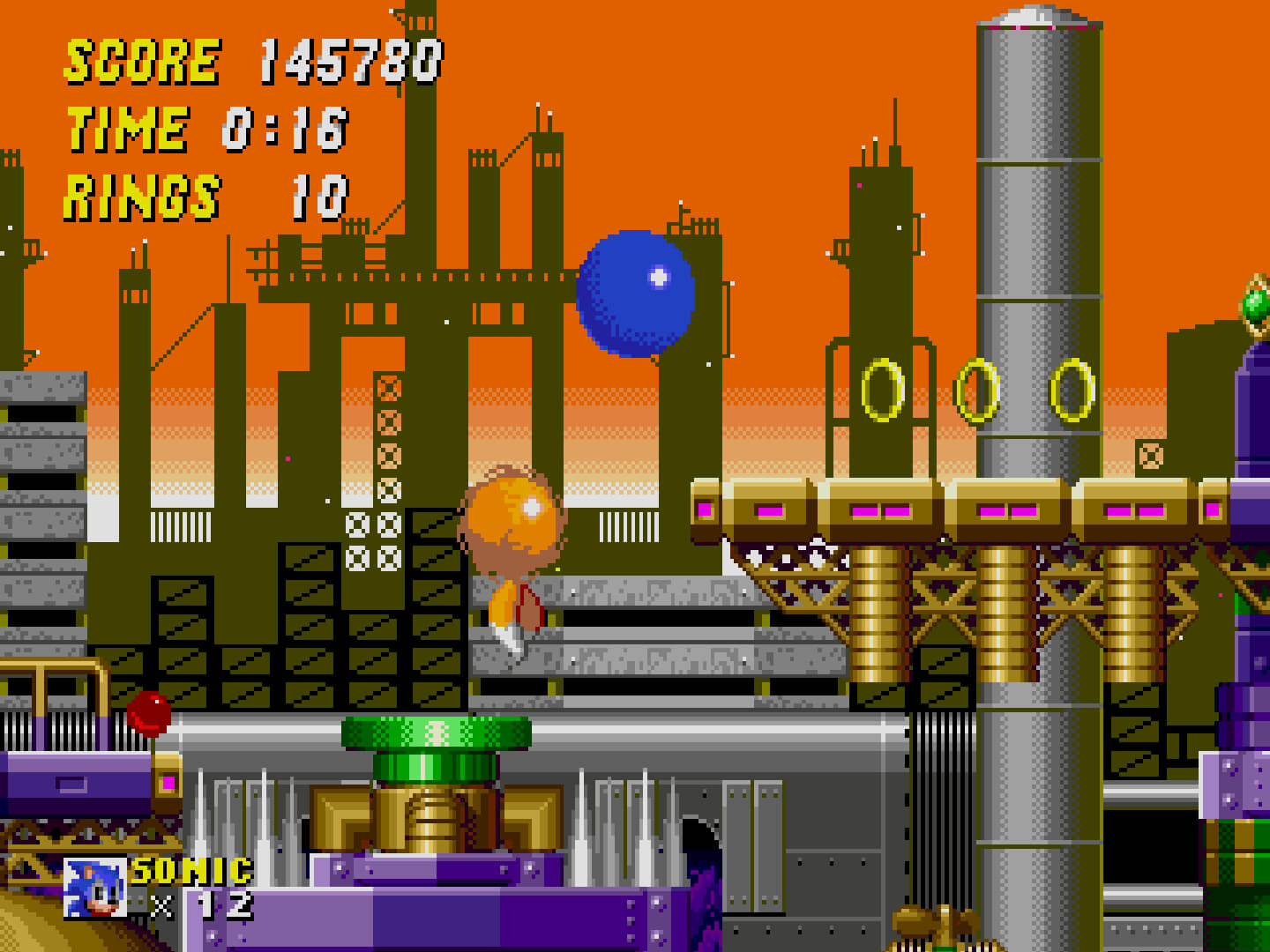
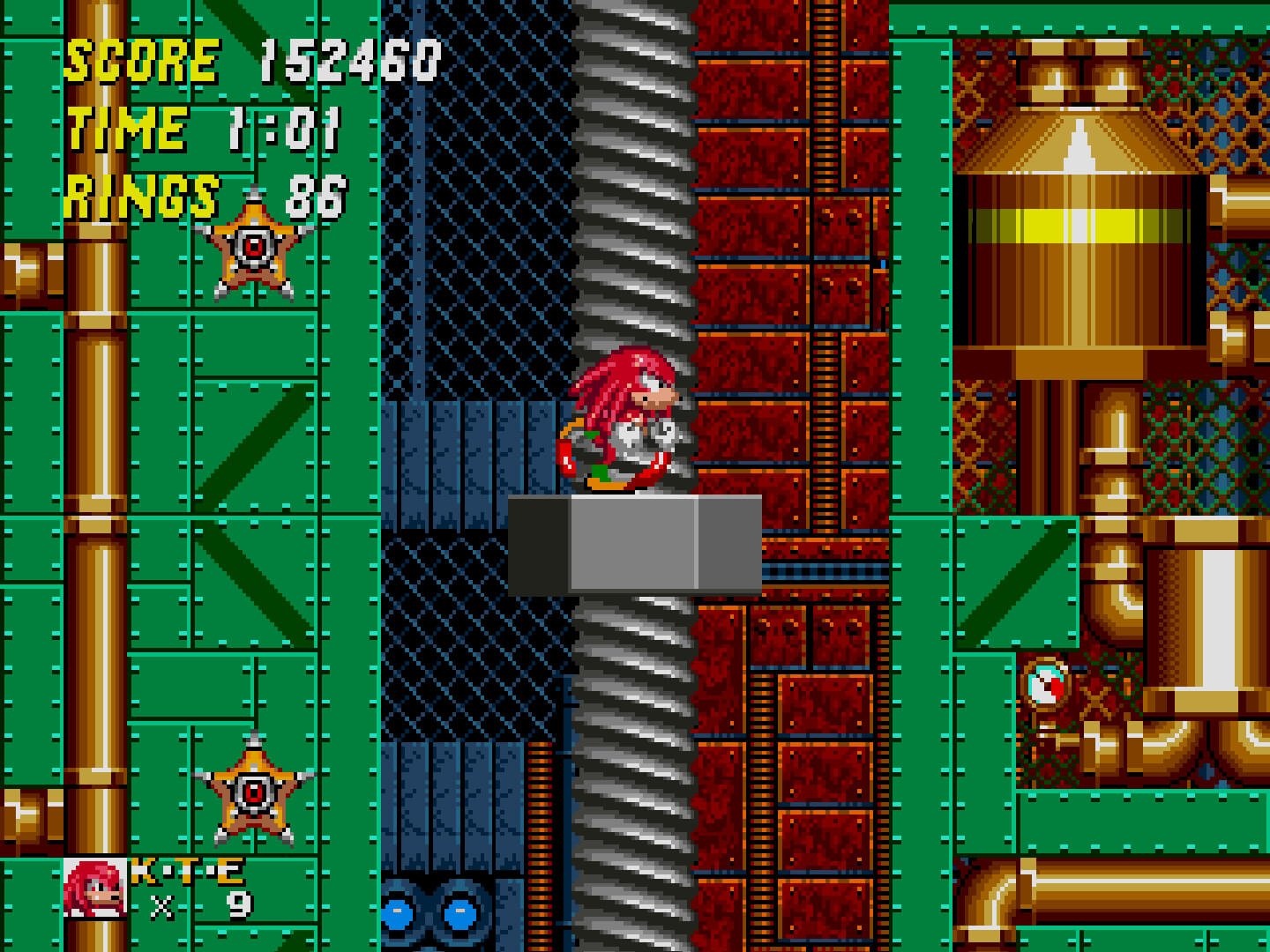
Left = Oil Ocean Zone
Right = Metropolis Zone
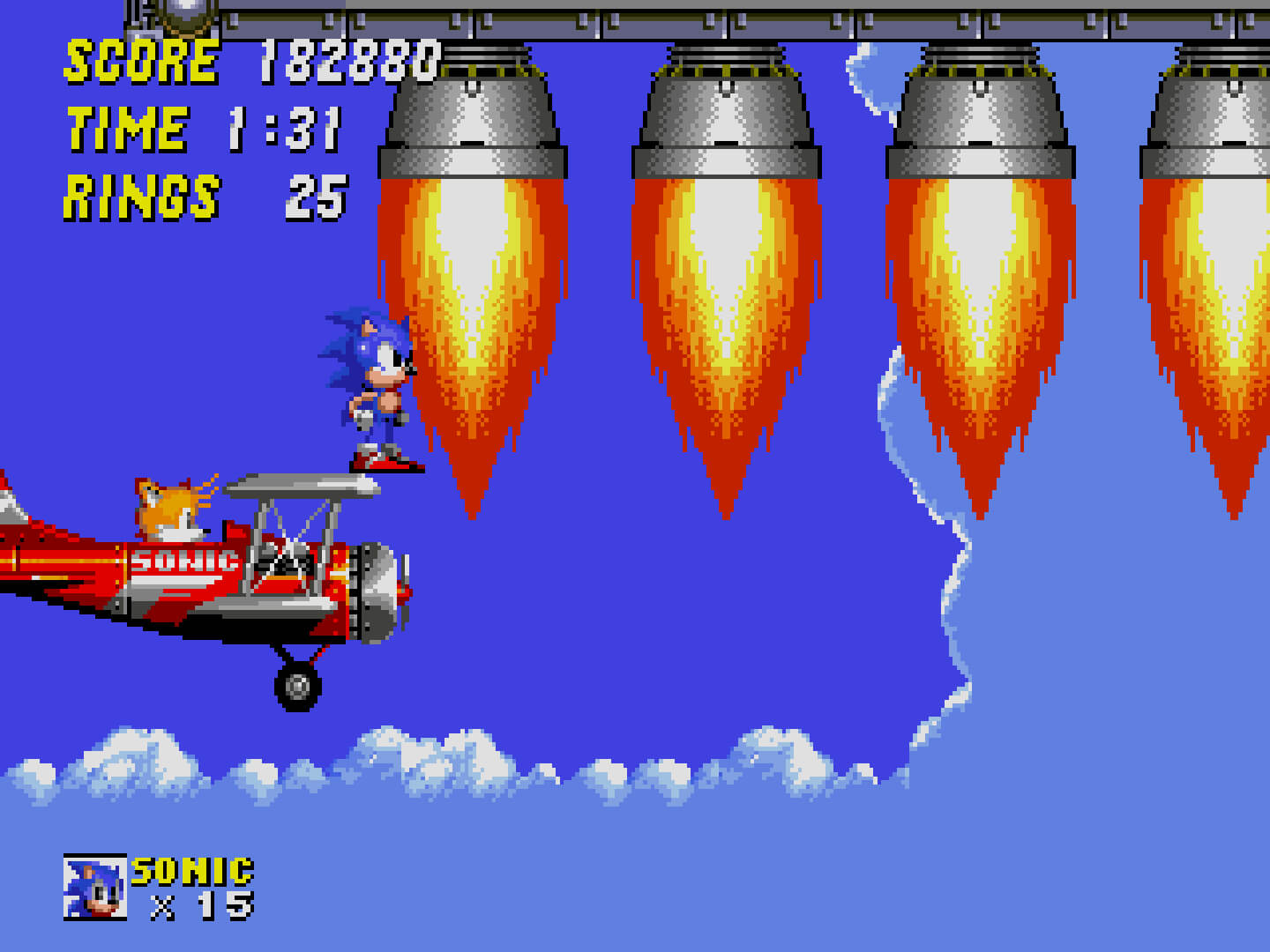
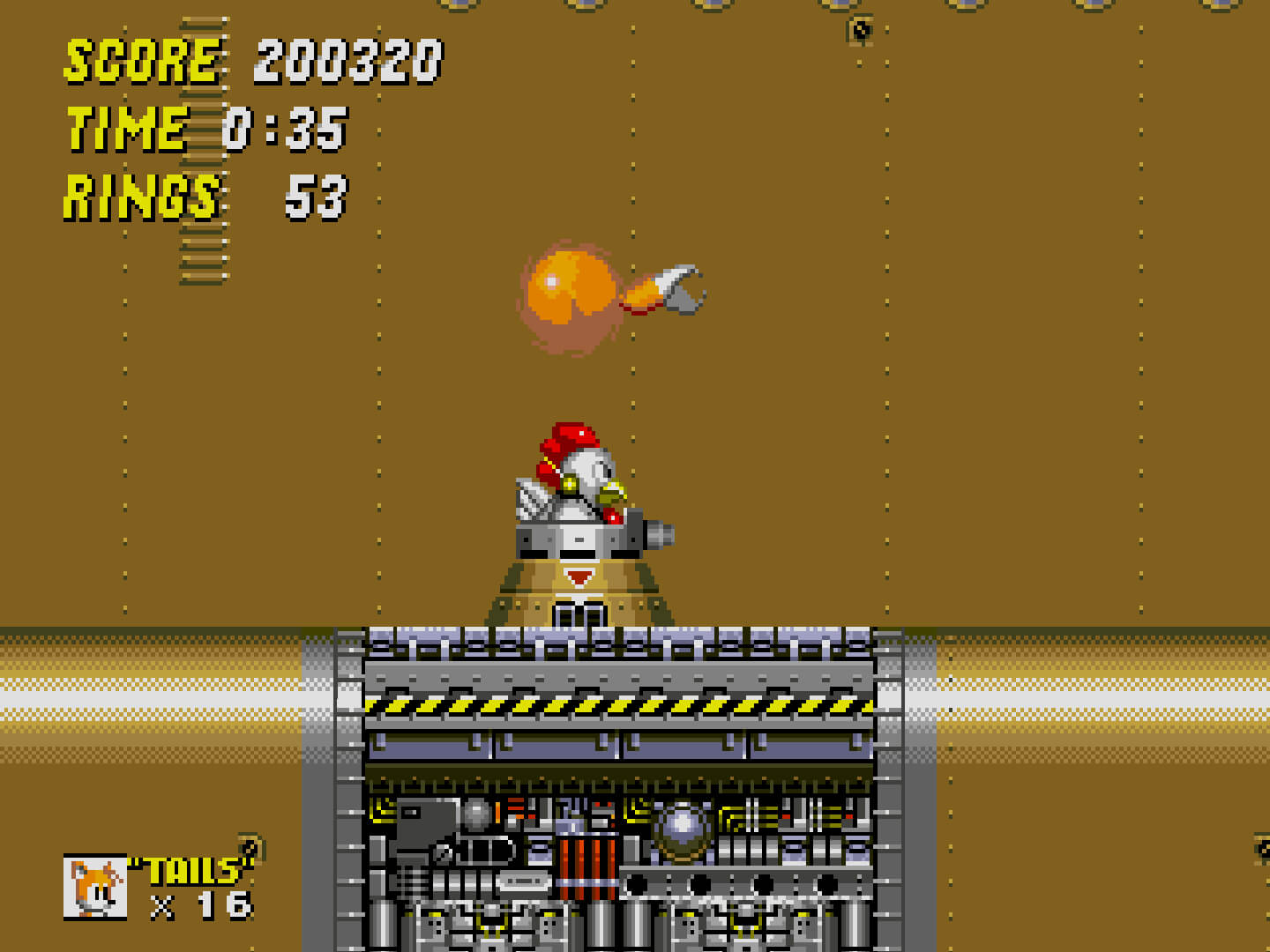
Left = Sky Chase Zone
Right = Wing Fortress Zone
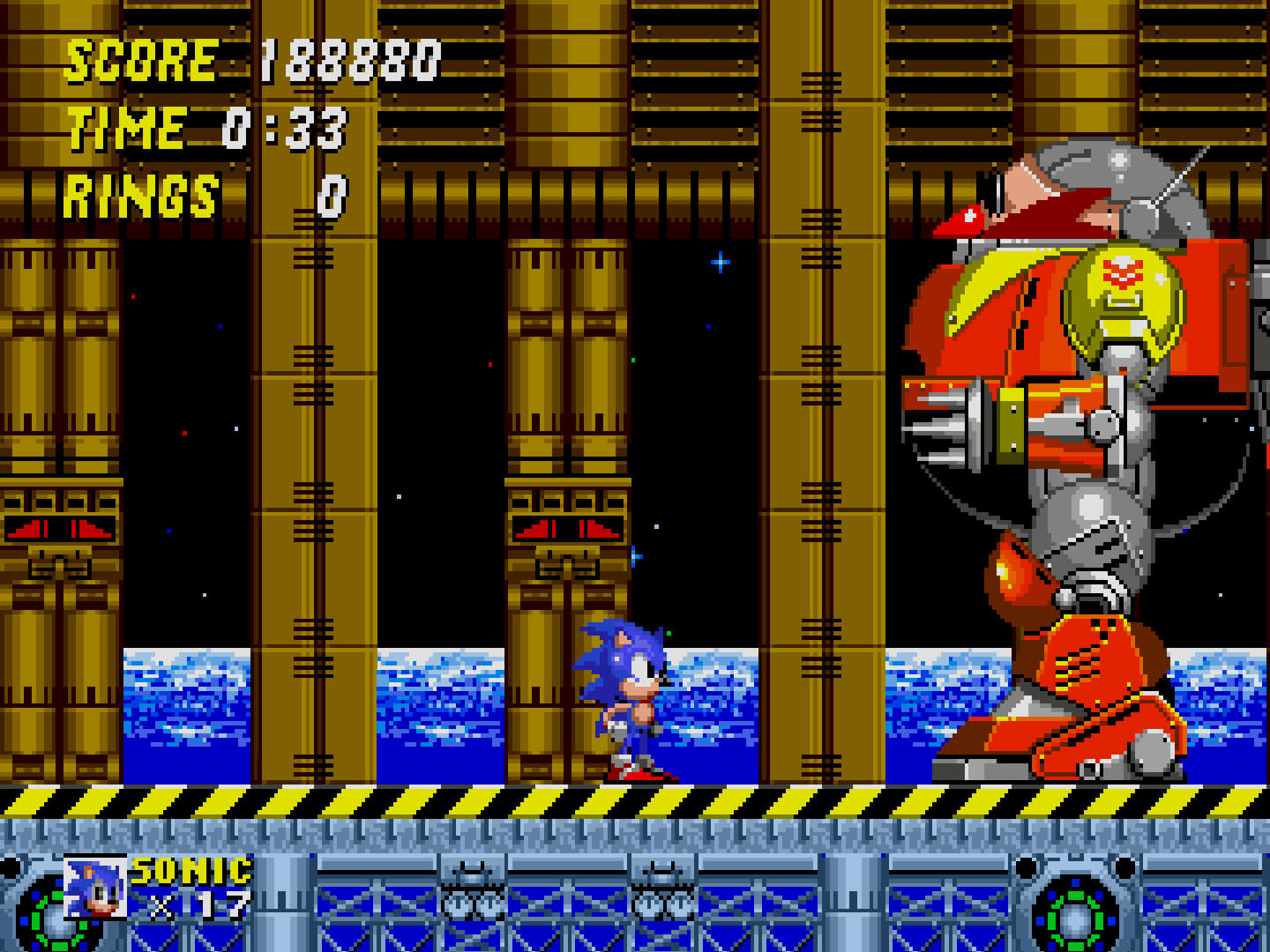
Death Egg Zone
If you're playing the 2013 port, you'll also have Hidden Palace Zone as an optional level in-between Mystic Cave Zone and Oil Ocean Zone. This pays tribute to the original Hidden Palace Zone that was famously supposed to be in the original release, but ended up being scrapped. The zone being scrapped is ultimately what lead to a different Hidden Palace Zone being made for Sonic 3 & Knuckles.
What's New in Sonic 2?
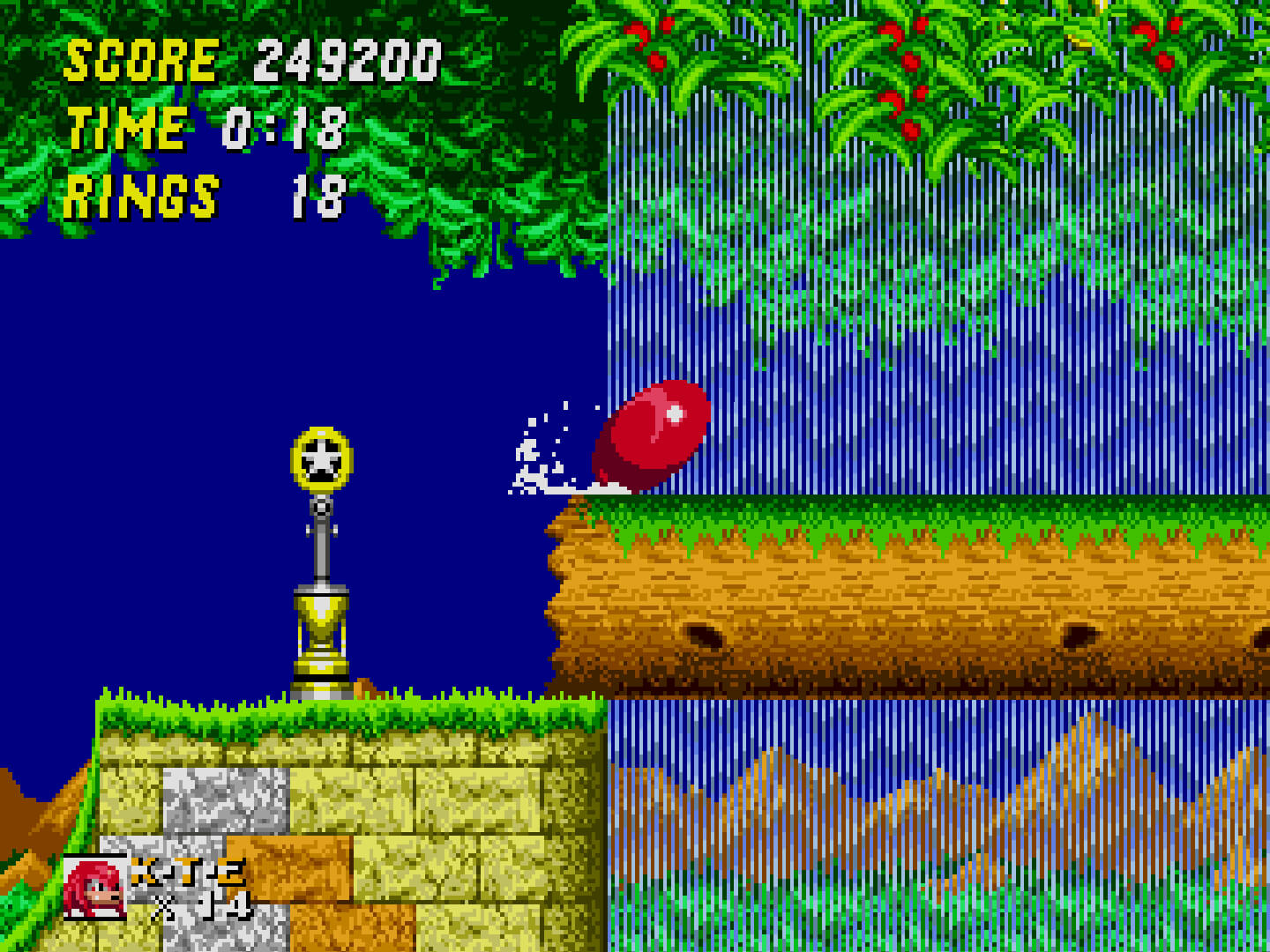
Don't question the physical logistics of it. Just accept it as the best new addition to the series.
The game can be played with either Sonic and Tails together (with Tails controlled by either the AI or a second player), or you can play as either Sonic or Tails by themselves. The two characters don't really play any differently though. Though he wouldn't make his official debut into the series until Sonic 3, you can also play as Knuckles in this game by locking the Sonic 2 cartridge onto the cartridge for Sonic & Knuckles (or in my case, downloaded a community mod for the Steam program that emulates the same exact thing). While playing as Knuckles, you have the ability to glide, and to latch and climb onto walls, however he can't jump as high as either Sonic or Tails.
New characters aren't just the only new addition to this game. In my opinion, the biggest new addition to this game is the 'spindash' move which all characters can do by holding down, repeatedly tapping the jump button, and then letting go. This allows you to build momentum absolutely anywhere you want, and it's a great move for killing enemies and moving quickly.
If you found Sonic 1 to be a bit on the difficult/stressful side, you'll be pleased to know that this game tones the difficulty down to be a bit more manageable (until you get to Metropolis Zone anyway). Not only are the stages themselves a bit more relaxed, but it's also easier to gain extra lives. Every 50,000 points you get nets you a free 1-up. Speaking of points, the 'continue' system has also been retooled in this game to give you one if you finish an act with a score of 10,000 points or higher from the score tally.
Special Stages
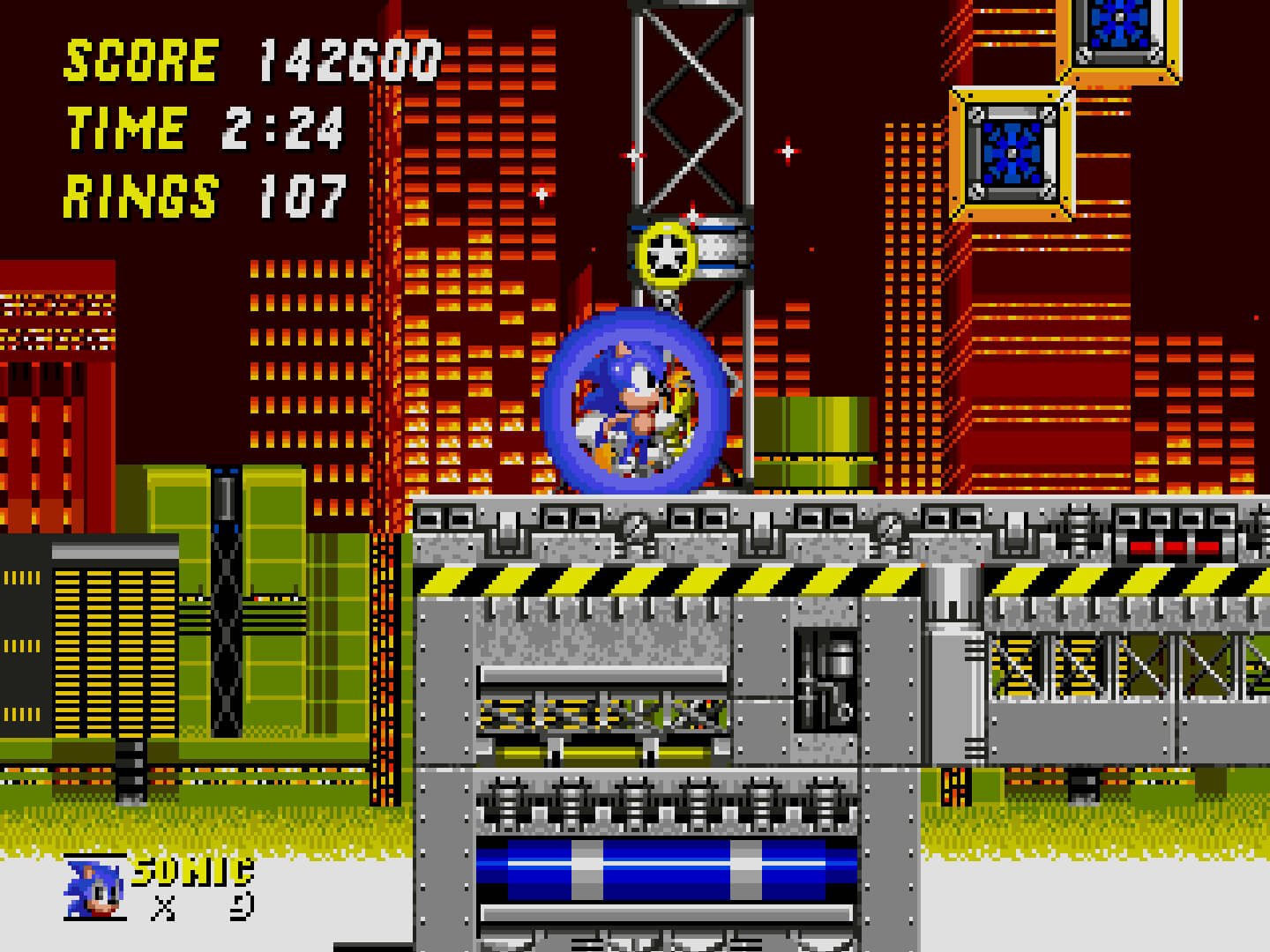
Ooooh, pretty stars!
Special Stages in this game also get a huge rework compared to Sonic 1, so much so to the point where I believe it merited giving them their own section in this Retrospective. Means of accessing them are largely the same as the first game, where you reach an area with 50 rings. In this case, it's a checkpoint (which themselves have also seen a visual overhaul) instead of the end of an Act which means that you're given a lot more opportunities to get Chaos Emeralds - all 7 of them, instead of 6 like in the first game, and this will be the case for the entire series moving forward.
This way this works is that once you reach a checkpoint with at least 50 rings, a ring-shaped array of sparkles will appear above the checkpoint. If you wait too long or you go too far off screen, the sparkles will disappear. Jump inside of it however and you'll be taken to the Special Stage.
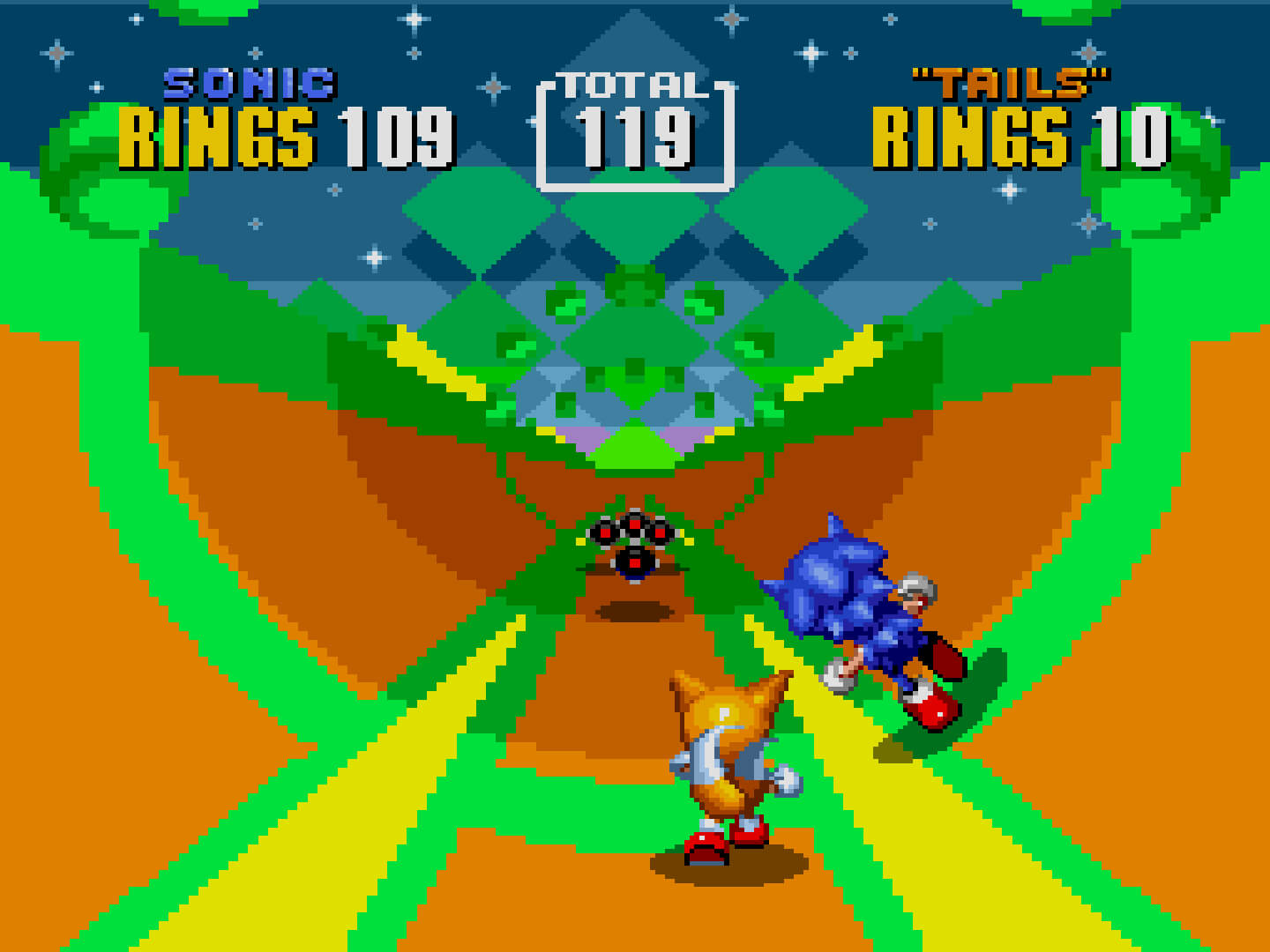
Sick half-pipe, bro!
And this is the first game in the franchise to incorporate this design of Special Stage which would be a mainstay in the franchise for the entirety of its existence. In these Special Stages, you're automatically moving forward while running alongside a halfpipe with rings and bombs in the way. The game will tell you how many rings you need to grab, and if you grab that many rings when you make it to the end of the section, you'll go to the next one. After the third section in each Special Stage, you'll grab a Chaos Emerald.
Sounds simple, but the Special Stages in this game are quite tricky. Along the track, there are also bombs in the way and if you hit one, you'll lose 10 rings. Additionally, you aren't given a whole lot of reaction time to see what's coming so you've got to be prepared for when a group of rings or bombs shows up. Unlike the first game, you have to complete the first Special Stage before moving onto the second one, and then that one to move onto the third one, and so on. The 2-player mode also has its own Special Stage.
Ring requirements will vary based on character choice. If you play as Sonic and Tails, the latter will accompany you, controlled by the AI and following you wherever you go. However, his reaction is delayed which means that, while he will be able to pick up some straggling rings that you miss, he's much more liable to be hit by a bomb if you quickly move or jump out of the way to avoid it. With a second controller plugged in, the second player will control Tails, which will alleviate this. To make up for this advantage though, the ring requirements for all of the Special Stages are higher in co-op compared to only playing as Sonic or Tails by themselves. Knuckles on the other hand has lower requirements and he's definitely the easiest character to grab all of the Emeralds with.
Regardless of whether you cleared the Special Stage successfully or not, you'll receive a lump sum of points at the end, which can help you on your way to getting an extra life. The amount of rings you're carrying will be set back to 0, but all the rings and items you picked up will be reset as well, so you can go back to collect them again if you're so inclined. Playing as Knuckles, your rings won't be set to 0, but will instead be set to however many you had when you touched the checkpoint. This combined with the lower ring requirements makes getting all the Emeralds with Knuckles almost trivially easy.
What happens if you get all of the Emeralds though? Just a better ending again?
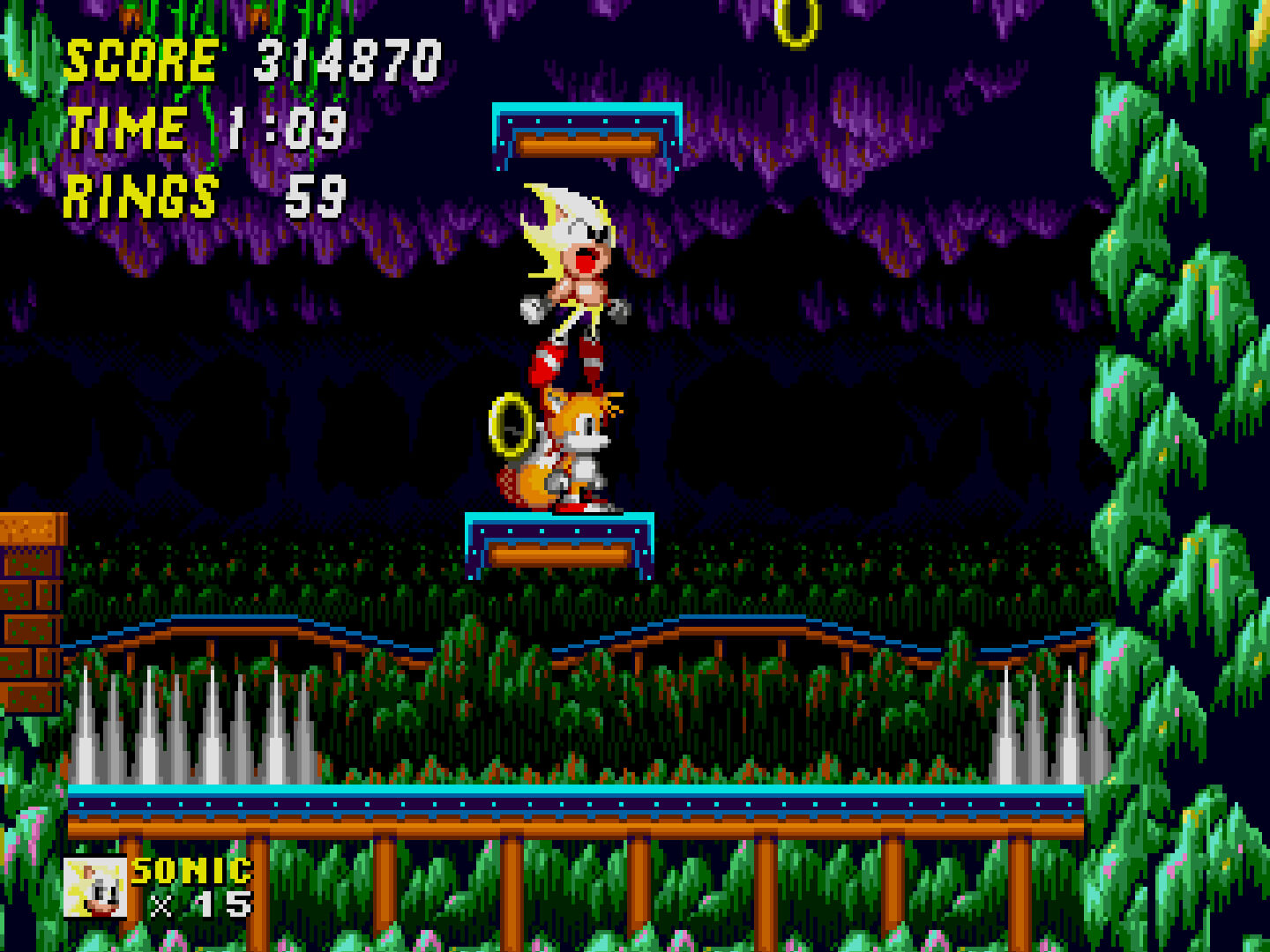
Sonic's power level. It's… Over 9000!
Nope. This game is the first to introduce the concept of Super Sonic. Once you collect all 7 Chaos Emeralds, you will automatically activate Super Sonic when you jump while you hold at least 50 rings. While you're Super Sonic, you are completely invincible to all enemies and stage hazards and the only ways you can die are through being crushed, falling into bottomless pits, or running out the clock. As Super Sonic, you'll drain a single ring per second and if your rings hit 0, you'll return to your normal form.
As you can imagine, this makes the game quite easy, right? Yes, it does. Ironically, if you're good enough at the game to where you can get all 7 Chaos Emeralds (without save states), then you probably don't need to use Super Sonic at all since someone of your skill level can do just fine without it.
While Super Sonic is mostly a benefit to the player, it does have a downside that it makes it a lot harder to collect lives since it's not possible to not turn into Super Sonic when you jump and you have 50 rings. You're relying on 1-up boxes for those, although as stated before, if you're good enough to get Super Sonic, then you probably don't need those lives anyway. Super Sonic is also more loose to control, meaning that precise platforming will be made much more difficult. The fact that you can't choose to not activate it also means that once you unlock it, you're forced to use it for the rest of the game if it's available (assuming you reach 50 rings at some point that is).
Super transformations would later become one of the most iconic parts of the franchise as a whole.
What Makes the Sequel Better?
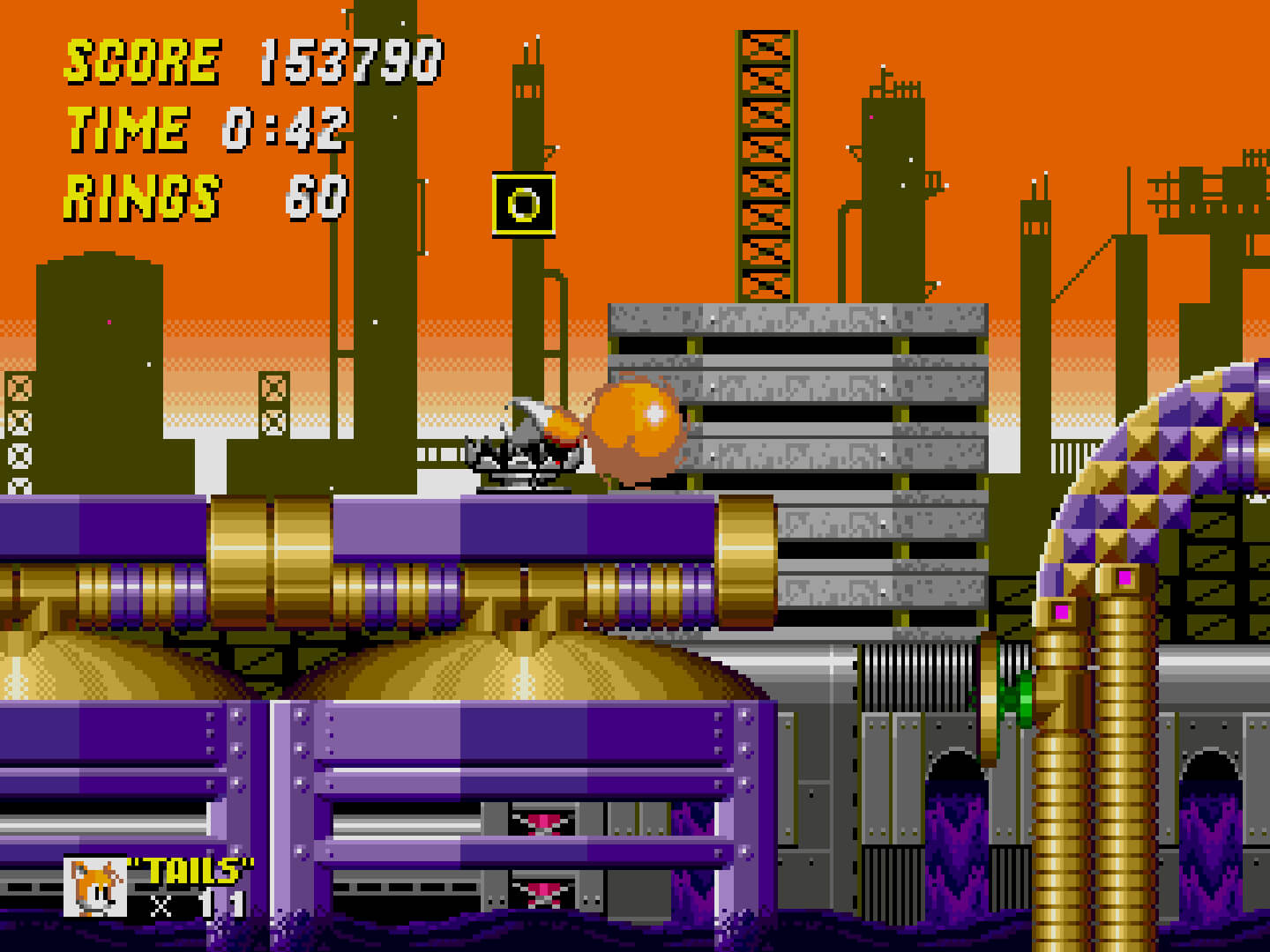
I wonder what would happen if I just lit a match right here.
Why exactly is Sonic 2 a better game than Sonic 1? I think there's a lot of ways to answer that from a… retrospective (hehe) point of view and also trying to understand the perception of someone playing this for the first time in 1992. Even though I wasn't yet alive by that point, I can damn well try to think like that.
If you ask me, one of the biggest improvements of this game compared to the first is the way the game is paced out. It feels weird to talk about a Sonic game being slow paced, but nothing in this game slows down to a crawl like it did in Sonic 1, particularly in Labyrinth Zone. Although not every zone is speedy, even the slower paced zones don't move themselves at a snail's pace. In short, it always feels like you're making progress.
The game's difficulty is also more relaxed in this game compared to Sonic 1 (although that gets thrown out the window when you reach Metropolis Zone). I wouldn't say that Sonic 1 is horribly difficult, but it's definitely not as forgiving as the later Genesis titles. In addition to the fact that the stages themselves have better difficulty design, it is also easier to obtain extra lives. That's not to say that the game is cakewalk through and through (especially if you try to go after the Chaos Emeralds), but it makes the game more relaxing to play. You may also be happy to know that the spike "glitch that isn't really a glitch" is fixed.
In retrospect, I think the game is also praised for its elements, that would later become mainstays of the franchise as a whole. Namely, the addition of the spindash maneuver, Tails, the seventh Chaos Emerald, the half-pipe Special Stages, and Super Sonic. If you play later Sonic games, it's easy to see how all of these have carried over as the years went by and continue to do so.
What's Bad About It?
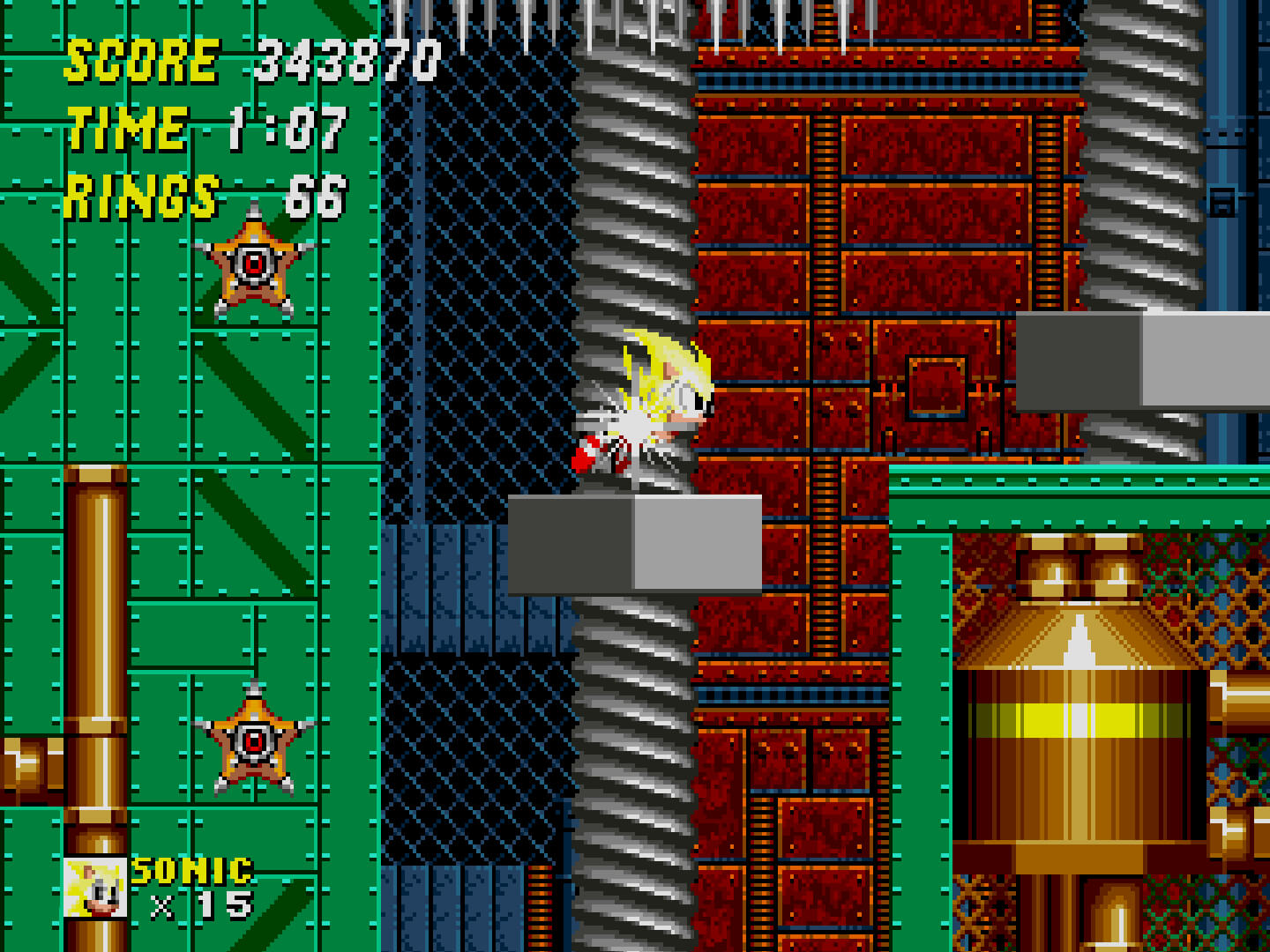
I'm sorry if I gave some of you bad memories of this stage.
I never said that this game was perfect, and that's because it isn't. The biggest demerit on this game, and that's something that most people familiar with Sonic 2 will agree with, is the difficulty spike. The game is fairly easy until you reach Metropolis Zone, where the difficulty spikes up quite tremendously. I've played the level enough to the point where I don't really have a problem with it anymore, but if you're not prepared for this Zone, you will have a tough time and you're probably going to get mad at it.
The enemies in this stage are a pain in the ass, particularly the crabs and the mantises (yes I know they have official names, but not only do they not deserve that respect, literally zero people who are reading this article will care that I didn't name them). The star enemies I don't have a big problem with because they're easily telegraphed, but the other two get a bit too obnoxious for my taste.
Unless you have really good reaction time, the Special Stages may also feel like a bit of trial-and-error (and even then, some parts will just still trip you up). Again, I know the stages well enough to the point where this isn't a problem anymore, but first time players will largely rely on playing some of the later stages multiple times over to figure out exactly what to do. Some modern ports of the game recognized this issue, and redesigned the way the stages work to give the players more time to see what's there.
How Can I Play the Sonic 2?
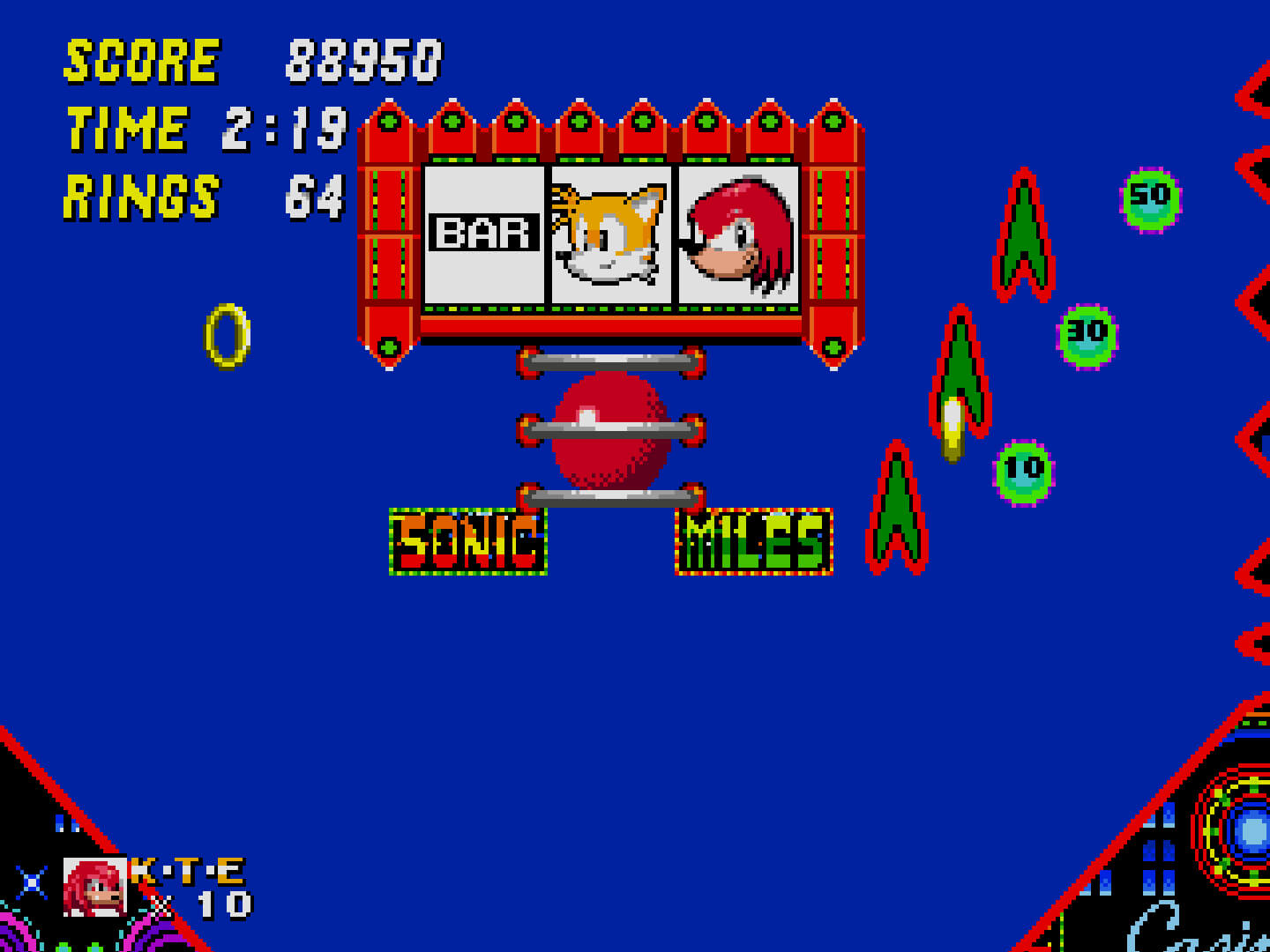
Don't gamble, kids. Unless you're doing it with rings, then it's completely fine.
Where exactly can you play Sonic 2 though? The answer is… literally just about any place that you can play Sonic 1 will also allow you to play Sonic 2. Every compilation of classic Sonic games and Genesis games as a whole will have Sonic 2 in it. The version I'm playing is the one from Steam's Sega Genesis & Mega Drive Classics, although as of 2022, you can't get them from there anymore due to Sonic Origins being released. You can, however, buy Sonic Origins itself from Steam, and it was recently given an update in the form of Sonic Origins Plus.
And of course, there's always playing the authentic cartridge on a real Sega Genesis with a CRT TV if you really want the 1992 experience. But really, who could blame you if that wasn't an option?
That will do it for this Retrospective. What memories and thoughts of this game do you have? Feel free to tell us in the comments below.
Will I be doing a Retrospective for Sonic 3 & Knuckles? Absolutely, I will. Not next though. My next Retrospective will be yet another Genesis title, but it will be one that's much less mainstream. It's a criminally overlooked game that deserves much more attention and love than it gets, and you'll know what it is next time.
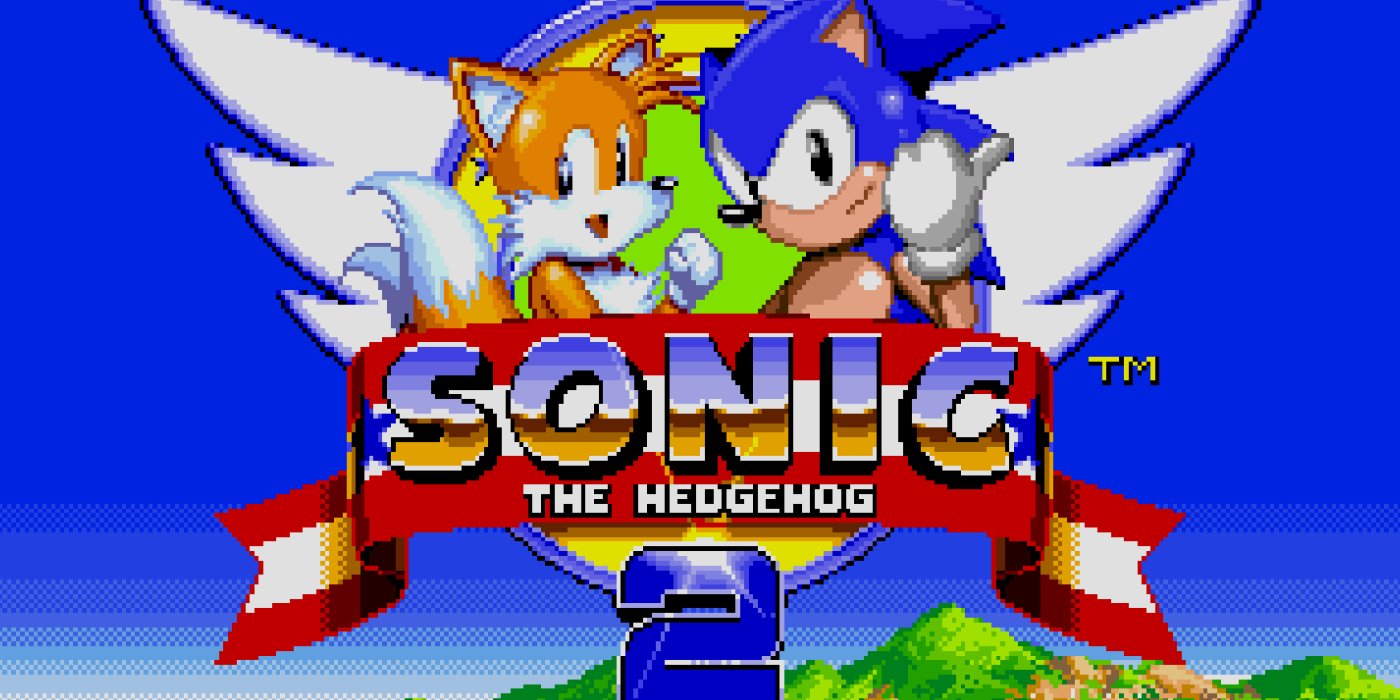
Comments
Sonic 2 is fine, sonic 3 however requires you to have all the emeralds to get the real ending, and that's far greater a difficulty than sonic 2 ever was. I dont think Ive ever made it without cheats, but then again the sonic game franchise is something Im only willing to waste my time with in my youth, when I have less games and more time to burn.
I think my initial comment from your first post on sonic 1 still applies. At the end sonic 2 & 3 are good 'sonic games' but nevertheless remains a poor game in general. There are better platformers out there in the genesis age than these two.
Praying that your next article would be on batman forever. Now that's a game that's worth playing even today, because its so bad its good. Even today I cant go through the game without laughing at every corner.
In regards to your comment on Batman Forever, I'm not really sure if we'd ever cover 'bad' games on this series. Of course, how good a game is varies from person to person in many different ways, but it's fairly uncommon for games to be iconic and worth remembering back of their lack of quality rather than their actual quality. It might happen one day by some of us as either a joke or as a means as comparison to a relevant flop, but just in general, covering games that are iconic for being bad games feels very counterintuitive to the goal of the series.
A shame, because that game was actually quite popular when it first came out, owing to its IP and lauded digitalized graphics, sort of like rotoscoping.
To be fair to batman forever, it wasn't that bad a game. For a genesis game it was fairly complex with lots of weapon types, but implemented with button inputs like street fighter. I just happen to think the animation is funny as hell.
Oh well, if youre on for good retro games, perhaps the ducktales series would be up? That's one practically any 90s kid would recognize and played. Or the disney genesis platformers, which is astonishingly well animated and so difficult you'll never guess it was mickey mouse fucking with you.
I played (and failed at) Aladdin when I was a kid. Good times.
One of these days I might have to make my own Retrospective about Lunar: Silver Star Story Complete and Lunar 2: Eternal Blue Complete for the PS1. They left a major impression on me when I was younger.
Oh my god, is that the one where you'd always have to jump across roofs and pits and you had to time it perfectly or you'd fall? That was brutal to 4-6 year old me.